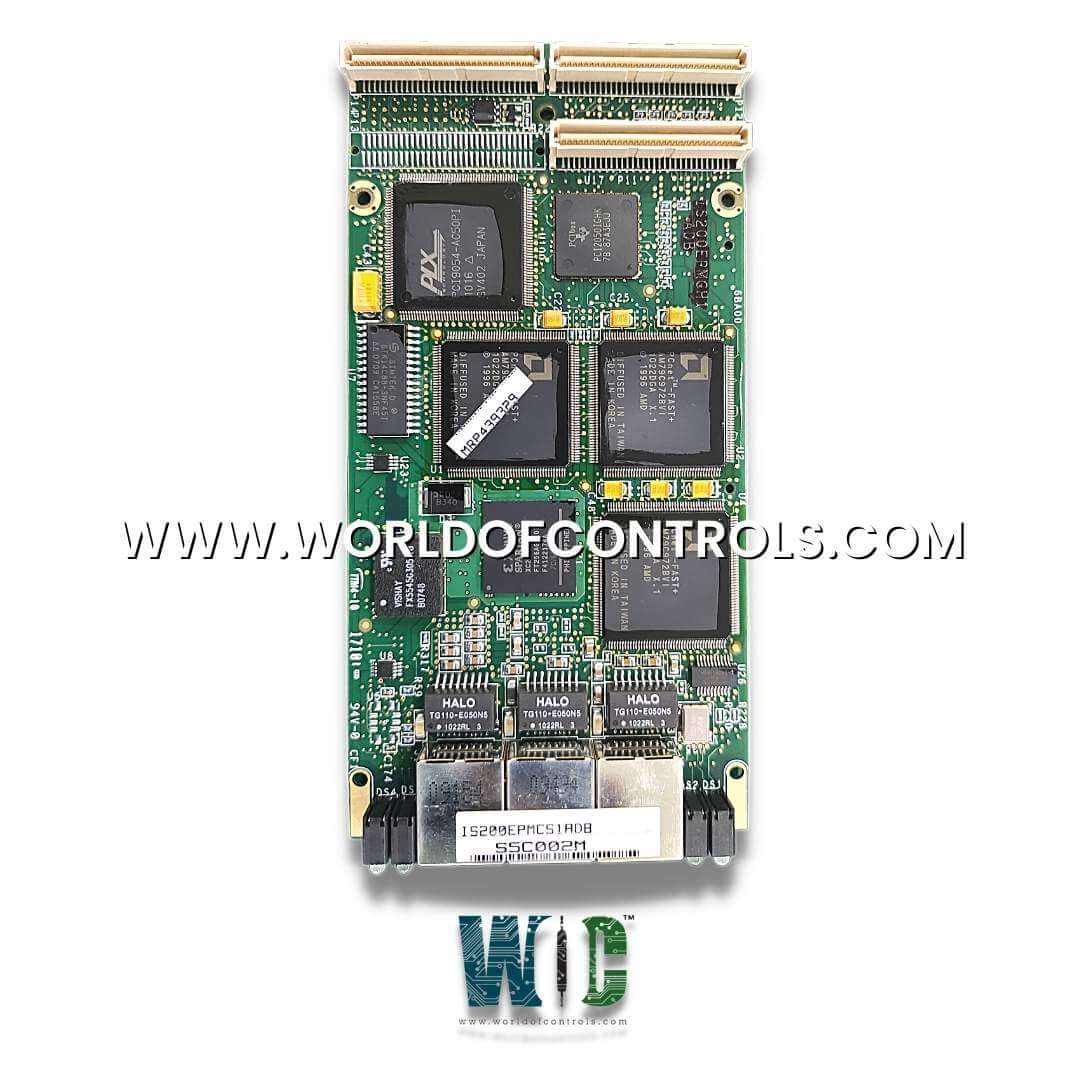SPECIFICATIONS
Part No.: IS200EPMCS1A
Manufacturer: General Electric
Country of Manufacture: United States of America (USA)
Technology: Surface-mount
Temperature Operating: -30 to 65oC
Product Type: PCI Mezzanine Card
Availability: In Stock
Series: Mark VI
Functional Description
IS200EPMCS1A is a PCI Mezzanine Card developed by GE. It is a part of Mark VI control system. The PCI Mezzanine Card (PMC) is designed to enhance CPCI controllers by providing specialized hardware functions. This daughterboard attaches to one of the PMC sites on a CPCI controller and interfaces with the processor board via the PCI bus, ensuring efficient communication and functionality.
Features and Functions
- Power Supply Monitoring: This includes circuits that monitor the power supply to ensure stable and reliable operation of the controller. This feature is critical in industrial environments where consistent power is essential to maintain system stability and prevent unexpected downtimes or failures.
- Flash-backed SRAM: Equipped with flash-backed SRAM, the module provides non-volatile memory storage, allowing data to be retained even in the event of power loss. This capability is essential for applications that require persistent data storage to ensure critical information is not lost during power outages or system restarts.
- IONet Ethernet Interfaces: The module facilitates high-speed and reliable communication between controllers and I/O packs through its IONet Ethernet interfaces. This real-time data exchange is vital for system coordination and control, particularly in applications that demand rapid and consistent communication between system components.
- Ethernet Physical Layer Packet Snooping for Precision Time Synchronization: Incorporates packet snooping capabilities at the physical Ethernet layer to provide precision time synchronization across the network. Accurate time synchronization is crucial for applications where timing and coordination between multiple controllers are essential for smooth operation, such as in power generation and automation systems.
Interface and Compliance
- The card communicates with the processor board via the PCI bus and is compliant with PCI Rev 2.2 standards, supporting both 3.3 V and 5 V signal levels. This broad compatibility ensures it can function seamlessly across different environments and hardware configurations, making it a versatile choice for various industrial applications.
- Ethernet Interface: It comes with three Ethernet ports (10BaseT/100BaseTX), each using RJ-45 connectors. These ports use TCP/IP protocols to facilitate efficient communication between controllers and I/O packs, ensuring smooth data exchange and integration within the control system. The multiple Ethernet interfaces provide flexibility in communication setups, enhancing system connectivity and performance.
- Applications and Benefits The PCI Mezzanine Card is designed to address the needs of industrial applications that require real-time communication, precise timing, and reliable data storage. Its power monitoring, non-volatile memory, and Ethernet interfaces make it a critical component for ensuring system reliability and efficient performance.
The WOC team is always available to help you with your Mark VI requirements. For more information, please contact WOC.
Frequently Asked Questions
What is IS200EPMCS1A?
It is a PCI Mezzanine Card developed by GE under the Mark VI series.
What power monitoring capabilities does it offer?
It includes circuits for monitoring the power supply, ensuring stable and reliable operation of the controller and connected systems.
What is flash-backed SRAM and why is it important?
Flash-backed SRAM provides non-volatile memory storage, which retains data even in the event of a power loss. This feature is crucial for applications requiring persistent data storage.
What are IONet Ethernets and what role do they play?
IONet Ethernets are high-speed, reliable communication interfaces supported by the IS200EPMC. They facilitate real-time data exchange and system coordination between controllers and I/O packs.
How does the board ensure precision time synchronization?
It monitors Ethernet packets at the physical layer, allowing for precise time synchronization across the network. This is vital for applications requiring accurate timing and coordination.
